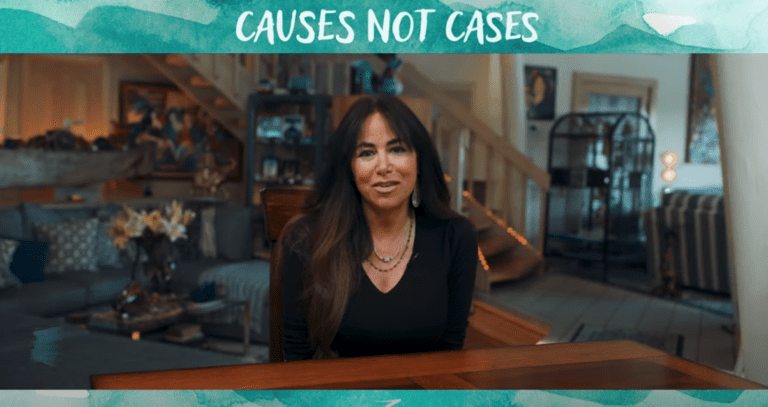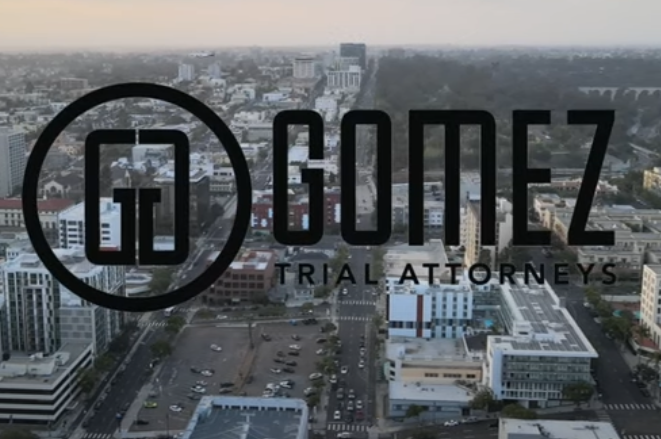Originally called punch drunk syndrome, chronic traumatic encephalopathy (CTE) is a degenerative brain disease found in people who have experienced TBIs. TBIs are commonly defined as repetitive brain injuries, including concussions and subconcussive hits to the head. Doctors first started learning about CTE in boxers during the early 20th century and it’s also common among football players; however, athletes are not the only people who are at risk for CTE. This long-term condition seeps into personal and professional aspects of a victim’s life and often has a large financial impact on victims and their families. This is where a brain injury lawyer can come in and relieve some of these burdens from the victim and their family.
If you or your loved one has suffered a brain injury, you might be at risk for CTE. When brain injuries occur as a result of another party’s actions, California law entitles you to seek compensation for damages in civil court. It’s in your best interest to contact a brain injury attorney who specializes in brain injuries, but you likely have some questions about CTE. Below we offer a broad overview of how CTE impacts the brain, who is at risk for CTE, common causes, diagnosis and treatment, and financial struggles victims and families face in the wake of brain conditions such as CTE.
[lwptoc]
How Does CTE Affect the Brain?
 Although CTE is not an immediate response to head trauma, medical professionals understand that it has a relationship to post-concussion syndrome and second impact syndrome. Yet, they aren’t certain how these things cause changes in the brain that lead to CTE. The most agreed upon explanation of CTE is that repeated brain injuries trigger degeneration in the brain, which includes a buildup of tau, a type of protein that spreads through the brain and kills cells.The time between the repeated head traumas and the onset of CTE symptoms might be months, but is often years and sometimes decades. Read on to learn more about CTE and answer any questions you may have.
Although CTE is not an immediate response to head trauma, medical professionals understand that it has a relationship to post-concussion syndrome and second impact syndrome. Yet, they aren’t certain how these things cause changes in the brain that lead to CTE. The most agreed upon explanation of CTE is that repeated brain injuries trigger degeneration in the brain, which includes a buildup of tau, a type of protein that spreads through the brain and kills cells.The time between the repeated head traumas and the onset of CTE symptoms might be months, but is often years and sometimes decades. Read on to learn more about CTE and answer any questions you may have.
Common Symptoms of CTE
According to the Mayo Clinic, common symptoms of CTE include:
- Memory loss;
- Confusion;
- Impaired judgment;
- Struggles with impulse control;
- Physical and emotional displays of aggression;
- Anxiety and depression;
- Thoughts of or attempts at suicide;
- Symptoms similar to those who suffer from Parkinson’s Disease, such as tremors, impaired speech, and slowed movement; and
- Progressive dementia in later stages of life.
Who Is at Risk for CTE?
The subject of CTE often arises in discussions about athletic injuries; yet, many other situations might lead to CTE. Below are some examples of scenarios, including athletics, where a person might experience repeated head traumas, putting them at risk of developing CTE:
- Full contact sports. Any athletic activities that lead to repeated blows to the head, even if they don’t result in concussions, can lead to CTE. The most common examples are boxing and football; however, soccer players, hockey players, martial arts practitioners, basketball players, skiers, skateboarders, and snowboarders, amongst others, all face risks of repeated head trauma and CTE.
- Military service. Those who are on the front lines of battle risk brain injuries from explosions. Large blasts can cause indirect blows to the head leading to a brain injury, as well as direct contact to the head from debris and shrapnel. Military service members who are exposed to repeated head trauma as a result of combat and blast injuries risk developing CTE.
- Domestic violence. Although men can be subject to domestic violence, it’s most often women and children who are injured. Abusing a child with blows to the head or shaking a baby can cause head trauma that leads to CTE later in life. Similarly, women who suffer at the hands of an abuser might experience multiple subconcussive and concussive head traumas, ultimately leading to CTE.
- Unintentional falls. Falls are the number one cause of traumatic brain injuries in elders, but this may not immediately lead to CTE. Yet, when young children slip and fall or fall off their bikes and hit their heads, this can potentially lead to CTE later in life.
Keep in mind that events that lead to head trauma and CTE don’t need to be the same. A teenager who was abused as a child could have played football in high school, joined the military after high school, and suffered a brain injury in a motor vehicle accident when he was home on leave. In this example, the person had at least four opportunities for suffering head trauma, including some situations that might lead to multiple traumas.
Diagnosing CTE
For many years, doctors could not diagnose CTE until after death, even using diagnostic imaging tools. During a postmortem brain tissue analysis, doctors dissect the brain and apply special chemicals, which make clumps of tau protein visible. Once they find evidence of tau, they search for patterns that reveal CTE. Brain tissue analysis can take several months and is not part of standard autopsy procedure.
Today, this is still true to some degree. Scientists and researchers have not found definitive biological markers to diagnose CTE in living humans. Yet, a team of researchers from the VA-BU-CLF Brain Bank, in conjunction with the National Institutes of Health, developed diagnostic criteria for CTE in 2015. These criteria make it easier for neuropathologists who understand brain disease to diagnose CTE with reasonable certainty when a person is still alive, but much more research still needs to be done.
Treatment for CTE
Currently, doctors do not have a cure for CTE. Scientists continue to press on to learn more about CTE with the hopes of developing better treatments. Meanwhile, when doctors suspect CTE or make a diagnosis, they can only help treat some of the symptoms with targeted therapy, including:
- Changes in mood. Doctors often recommend those who suffer from depression, anxiety, and irritability participate in cognitive behavioral therapy to develop strategies and tools to help them manage their mood changes.
- Residual headaches. When those who suffer from CTE suffer repeated headaches, they might find relief with craniosacral therapy, massage, acupuncture, or pain medication. A doctor will recommend the best treatment based on the type of headaches a patient experiences.
- Struggles with memory. Doctors and therapists often recommend memory training exercises and strategies to help people who struggle with their memory go about their daily lives.
The Financial Impact of CTE
The emotional distress a person who experiences the symptoms of CTE suffers is compounded by the financial impact it can have on their families and household. This impact begins with the events leading to the injuries. Households might get some relief after as a person recovers from the initial injury until CTE symptoms kick in, but once that occurs, they will feel the burden for as the rest of the CTE victim’s life. Some of the economic costs associated with CTE include:
Ongoing Treatment of CTE Symptoms
Each brain injury varies in severity and location; similarly, no two people will experience the same CTE symptoms. Once symptoms begin and a person shares them with their doctor, it can take months for medical professionals to hone in on CTE or at least determine that the symptoms are related to a brain injury. It’s likely the victim will need to undergo multiple tests to determine the extent and nature of their functional and cognitive disabilities, and doctors will also typically perform diagnostic imaging scans such as CT scans and an MRI to get a picture of the person’s brain.
At some point, a physician may begin to treat symptoms, which can include a wide range of visits to other specialists to help a victim cope with their struggles. Patients who have cognitive challenges, especially related to memory function and attention span, often need to spend time with an occupational therapist who can help them learn strategies to complete necessary daily tasks, such as personal grooming and self-care. Speech therapists can help families and patients learn new ways to communicate as the disease progresses. As mentioned above, psychologists can help patients and families learn how to cope with mood changes and changes in personality.
These doctor visits, specialist visits, and tests lead to medical bills that continue to amass, forcing some families to file bankruptcy, lose their home, or struggle to get their basic needs met.
Long-term Nursing Care
CTE is a degenerative disease, which means it worsens over time. At some point, it’s likely that family members or a spouse alone will not be able to provide the around-the-clock care the patient needs. Even those who try need a break on occasion. At the very least, a family will need respite care or a full-time home health aide. Those with the most severe manifestations of CTE will likely need to live in a long-term nursing care facility. These facilities are among the most expensive of all medical costs related to brain injuries and CTE. Additionally, unless you or your loved one has a long-term care insurance policy in place, most health insurance plans won’t cover long stays. The expense of long-term care can cause a severe financial burden for some families; in the worst cases, it might lead to bankruptcy.
Home Security and Modifications
When those who suffer from CTE live at home, their families often need to better secure the home for their loved one. If the CTE patient is mobile and experiencing memory loss, confusion, poor judgment, or progressive dementia, their home is full of dangers. Family members might need to install security systems and change door locks to prevent their loved one from wandering away from home and getting lost. Similarly, a CTE victim might wander out of their room and fall down stairs or trip over something and suffer further injury. Families might also need to install locks on drawers and internal doors to protect their loved one from accidentally causing harm to themselves.
Loss of Domestic Help
Depending on the household role the CTE patient had before experiencing symptoms, the arrival of symptoms can mean they are unable to contribute in the same ways to daily, weekly, and monthly chores around the house. When a family member takes responsibility for full-time care of their loved one, they also aren’t as available for some of the household tasks that need to be completed. In some cases families need to hire outside services to fill this gap. Examples include:
- Hiring a nanny or utilizing daycare services, especially when the CTE patient stayed at home with young children during the day and/or after school before experiencing CTE symptoms.
- Hiring cleaners to visit once or more per week for dusting, vacuuming, laundry, and other household duties.
- Hiring a lawn care service to mow the yard, trim the hedges, water plants, clean the pool, maintain a flower or vegetable garden, and help with any other outdoor maintenance.
- Hiring a grocery shopping service or having groceries delivered when caring for the CTE patient may be necessary. In some cases, families might supplement their groceries by ordering from a meal service or they might hire a private chef to help out.
Lost Income From Current and Future Wages

A person who has CTE will likely have to leave their job at some point as the disease progresses. If the patient was the primary breadwinner in the family or part of a double-income family, this loss only increases the financial burden on a household. Those who struggle with CTE symptoms might be eligible for disability payments. Yet, the maximum payout, even for lifetime benefits, is typically two-thirds of the patient’s average weekly wage from when they were working. This can still be a substantial hit to a household’s budget, making it difficult for the average family to pay their weekly, monthly, and yearly expenses like mortgages, insurance, and utilities. Younger CTE patients might never have the opportunity to seek gainful employment because of their disease, requiring them to depend on their family, the state, and a combination of other programs and services for those who suffer from a debilitating condition.
Still have questions about CTE, or how you might recover compensation for the people or entities who caused it? Call a brain injury lawyer at the Gomez Firm for more information.







